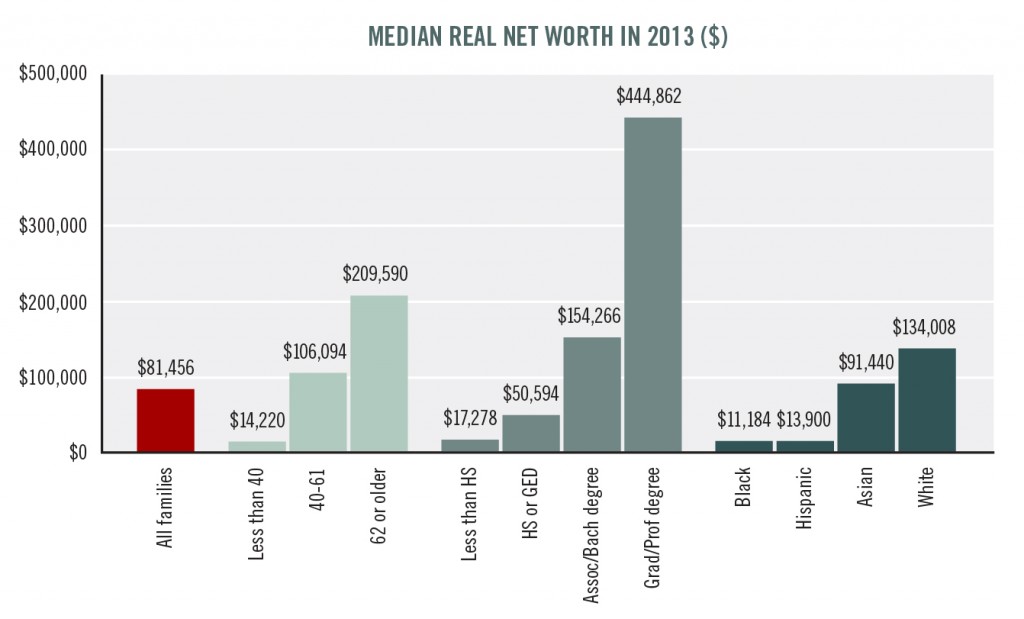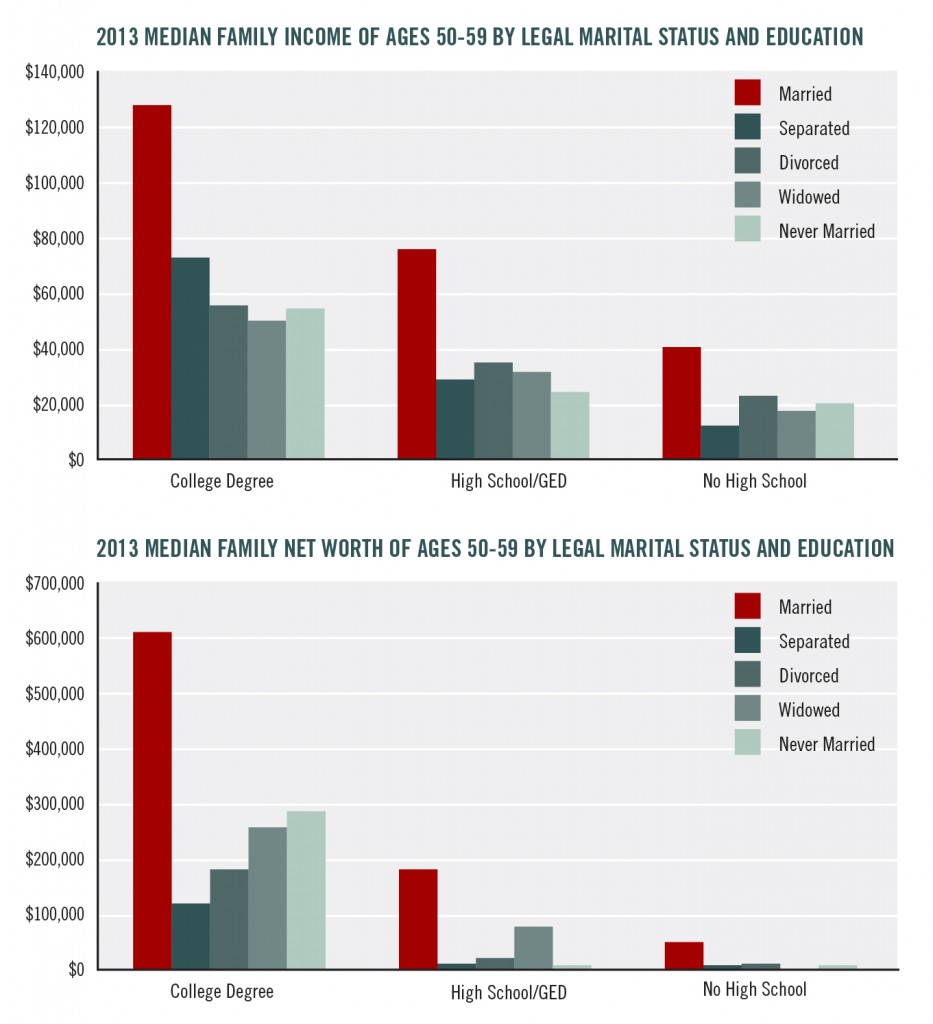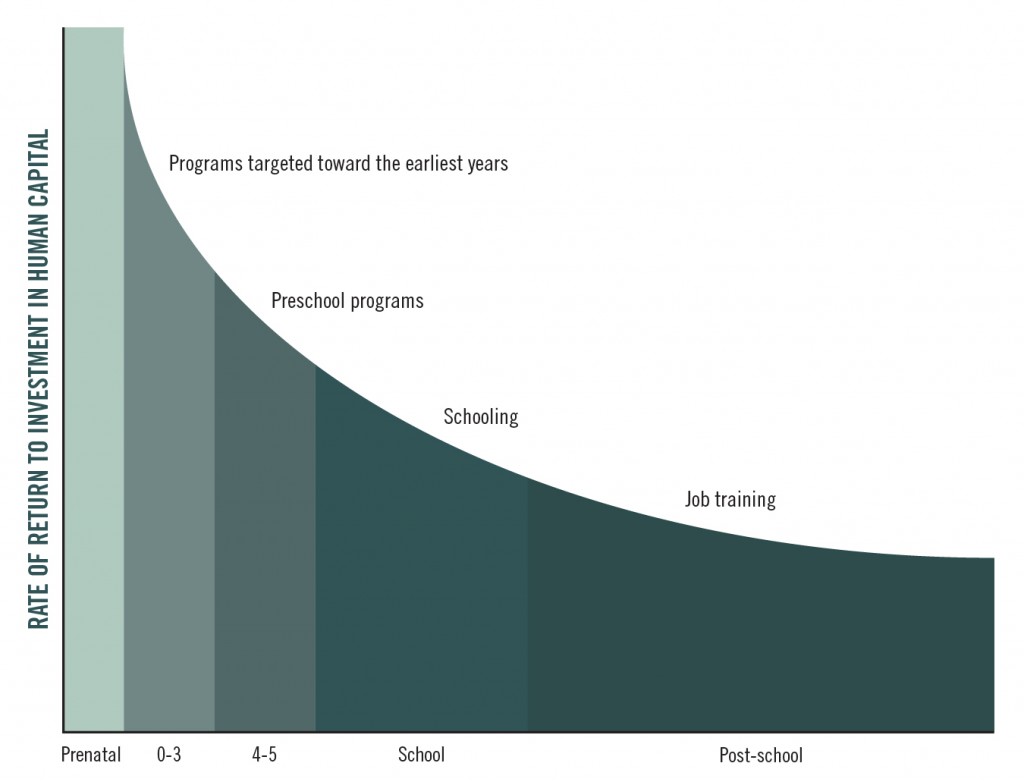The Future of Building Wealth: Can Financial Capability Overcome Demographic Destiny?
Written by Ray Boshara, Federal Reserve Bank of St. Louis1Bravo to MacKenzie. When she was born, she chose married, white, well-educated parents who live in an affluent, mostly white neighborhood with great public schools. She chose parents who read to her, signed her up for violin and soccer lessons at an early age, and involved her in church and community activities. She also chose her birth year wisely, making sure that she graduated from college and entered the job market when the economy was rebounding from the Great Recession. Thanks to the wealth and financial savvy of her parents, both now in their early 50s, MacKenzie graduated from a private, four-year selective college debt free, giving her many career options as well as the ability to start saving for a home and retirement.
Because of her great “choices,” MacKenzie is likely to accumulate wealth and achieve financial health over her lifetime. She and her parents belong to the roughly one in four Americans households we can call “thrivers.”
But too bad for Troy, who, despite being just as bright as MacKenzie, chose non-white parents who never married, and a poor, highly segregated neighborhood with lousy public schools and few options to be involved in music, sports, and civic activities. Troy’s young, hard-working, conscientious mother was never able to start college and is too busy — with her two part-time jobs, Troy’s siblings, and trying to stay afloat — to read to Troy as much as she would like to. In fact, she’s accumulating debts to family members and on credit cards so she can manage the increasingly frequent ups and downs in her financial life. She also lacks the know-how and networks to get Troy on a college-bound track, something his school fails to do as well. And Troy unwisely chose to finish high school just as the Great Recession was getting underway, so finding any job, let alone a decent-paying one with benefits, eludes him.
Troy, because of his bad “choices,” is not likely to accumulate much wealth or feel financially healthy over his lifetime. He and his family belong to the roughly three in four American households we can call “strugglers.”
But are Troy and MacKenzie forever consigned to one of these two groups? Can “executive function,” or the things they learn and the choices they do make, help them overcome the circumstances of their births, engage their will and intelligence, and enable them to climb to the top of the economic ladder? Is this not America? How much are Troy and MacKenzie’s financial futures determined by the choices they did not make: the economic moment in which they were born, their race or ethnicity, their schools and neighborhoods, and their parents? Indeed, isn’t this book about enabling more Americans to make better financial choices and, accordingly, realize better financial health and well-being? If, in short, demography is destiny, can the strategies offered in this book succeed? Although we cannot know for sure, I’m encouraged by recent research that sheds light on the nature of the challenge, promising solutions, and lessons and successes from America’s Progressive Era a century ago.
Research from the Federal Reserve Bank of St. Louis’s Center for Household Financial Stability,2 which I direct, suggests that three demographic drivers — one’s age or birth year, education, and race-ethnicity — may not in fact be destiny, but they do increasingly matter for building wealth and financial security. Indeed, while we find that families who make or are presented with good financial choices are more likely to build wealth, these three demographic drivers either serve as tailwinds (in the case of thrivers) or headwinds (in the case of strugglers) in families’ efforts to make those good choices. Other research has focused on the growing importance of family structure and parental education in predicting economic success.
These new economic realities lead, I think, to three policy implications. First, we must expand our understanding of — and response to — economic vulnerability to go well beyond one’s income to include these increasingly powerful demographic predictors of wealth and economic opportunity. Second, we must consider new and more robust investments in children, including integrating asset investments into the fabric of other early-in-life interventions. And third, we must embrace a “two-generation” approach, meaning we must invest in adults as well as children, especially in ways that contribute to their financial stability. Combined, these ideas will not only improve financial health for more families, but, as Jared Bernstein argues in his essay in this volume, contribute to a stronger economy as well.
Thrivers and Strugglers: A Growing Economic Divide
At the Center for Household Financial Stability, we focus on wealth, or more precisely, family balance sheets, for a few reasons. First, given the role that debt played in harming both families and the economy during and after the Great Recession, we must expand our household-level framework from just assets to the broader family balance sheet.3 Second, a growing body of research suggests that there are distinct, independent, and positive outcomes associated with balance sheet measures — account ownership, savings, assets, debt, and net worth — that are not necessarily associated with income or other traditional markers of social and economic well-being.4 And, third, net worth is like a barometer of one’s overall financial health, a summary measure of one’s financial outcomes over a lifetime (and, indeed, the outcomes of one’s predecessors), as well as an embodiment of future opportunities for families and their offspring. Wealth is thus integral to, although not the entirety of, one’s financial health or financial well-being.
Given wealth’s importance, it is disturbing that the wealth gap has grown dramatically during the last few decades. The Federal Reserve’s most recent Survey of Consumer Finances5 shows a massive shift in wealth away from those we are calling strugglers, who generally are younger, less educated, and non-white, and toward those we are calling thrivers, who generally are middle-aged or older, better educated, and white or Asian.6 Although thrivers’ share of the population has risen 9 percent since 1989, their share of the nation’s wealth has grown 23 percent. Stated another way, thrivers used to command less than one-half of the nation’s wealth, but now they own about two-thirds, despite accounting for slightly less than one-quarter of the population.
This dramatic shift in wealth in just one generation not only underscores the depth and pace of growing wealth inequality in the United States, but also illustrates how one’s age, race, and education appear to matter more than a generation ago in determining who does and does not build wealth. In other words, the returns for having these characteristics — or the penalties for not having them — have grown. MacKenzie and her family’s efforts to build wealth are buoyed by these demographic tailwinds, while the lack of them create headwinds that hamper Troy and his family’s efforts to financially succeed.
Let us consider each of these characteristics, or drivers, separately. As a reference point, Figure 1 shows large differences in current levels of wealth, as measured by median net worth.
Race, Ethnicity, and Wealth7
We can begin with race or ethnicity, where a few facts stand out. First, the wealth gaps are disturbingly large and the rankings have persisted since 1989. White families rank first, followed by Asian families, Hispanic families, and then black families. With the exception of Asians, the median net worth of all groups in 2013 is about the same as in 1989; the Great Recession wiped out most of the post-1989 gains. However, prior to the recession, whites and especially Asians had seen dramatic increases in their wealth, and since 2010, they have seen their wealth begin to grow again, while the wealth of blacks and Hispanics has continued to decline.
Also, wealth disparities are starker than income disparities. Median wealth for Hispanics and blacks is about 90 percent lower than that of whites. In contrast, median income of Hispanics and blacks is only 40 percent lower. This suggests these two groups may have had few opportunities to “convert” their diminished incomes into wealth, such as through homeownership and retirement plans. And although one would expect age and education to help explain the persistent differences in wealth accumulation across racial and ethnic groups (whites are generally older and better educated than blacks and Hispanics), our research shows that the wealth gap is largely unchanged even among equally educated, similarly-aged whites and nonwhites. Stated more starkly, education does not appear to be an equalizer, at least in terms of wealth. Therefore, other factors must be in play, including early childhood experiences, parental influences, and, of course, deep and historical discrimination against blacks and other minorities.8
Education and Wealth9
Now let’s consider education. Not surprisingly, the association between a family’s education and its wealth is very strong and has become stronger with time, leading to large gaps in wealth by level of education. Only families with college degrees or higher have seen their wealth increase since 1989 (even though all groups saw their wealth decline in the Great Recession). Those lacking a high school degree saw their wealth plummet 44 percent between 1989 and 2013, while families with a high school degree saw their wealth decline 36 percent. Meanwhile, families with a two- or four-year degree experienced a 3 percent increase since 1989, while the wealth of those with advanced degrees spiked 45 percent.
Notably, however, the correlation between education and various measures of economic and financial success does not represent causation. That is, the college degree itself may only partially explain differences in wealth: the degree serves as a marker of many other factors also correlated with educational attainment, such as native ability, family background, marriage patterns (i.e., the tendency of college graduates to marry other college graduates), being read to as a child, and the likelihood of receiving gifts or inheritances.
Age and Wealth
Finally, let’s look at age or, more precisely, year of birth. Of course older families are expected to have more wealth than younger families, but what we are observing is something deeper, even historical. To our surprise, age is the strongest predictor of balance sheet health, even after accounting for race and education. Americans in their 20s and 30s lost the most wealth in the recession and have been the slowest to recover. The average wealth of older (62 and older) Americans in 2013 was 16.7 percent less than 2007. 10 Over the same timeframe, the wealth of middle-age (ages 40–61) families declined 22.6 percent, while younger Americans (under age 40) experienced losses of 24 percent. The wealth of younger adults is concentrated in homeownership, which suffered greatly during the recession. Younger adults also have significant mortgage and consumer debts, few liquid assets, and they faced severe labor market challenges during and following the recession.
But this is not just a recession story; it is also a generational story. Succeeding generations are not as wealthy as previous ones. Our research shows that, holding the key determinants of income and wealth constant, each generation born during the first half of the twentieth century earned more and was wealthier than the generation before. However, among those born during the second half of the century, wealth and income have stagnated at levels below those born in the late 1930s and the 1940s. For example, those born around 1970 will likely have about 40 percent less wealth over their lifetimes than those born around 1940, holding everything else constant, including education, race, and age, and after adjusting for inflation. No doubt sheer luck plays a major role in explaining this — is one, for example, born into a smaller cohort, and does one enter the labor market during a period of strong economic growth? But public policy plays an important role as well: how generous is the safety net when one needs it, and can one pursue higher education without a heavy reliance on student loans?
Others have observed this as well. Research conducted by the Urban Institute finds that Generations X and Y11 have accumulated less wealth than their parents did at the same age over a quarter-century ago.12 Similarly, Neil Howe recently observed that the late Baby Boomers were the last generation to do better economically than their parents.13 And, as Phil Longman shows in his essay in this volume, today’s younger Americans are experiencing a “new normal” of falling living standards and declining levels of upward economic mobility.
Considering all three drivers of the growing wealth gap, a few insights emerge. First, the returns or penalties on one’s age or birth year, race and ethnicity, and education appear to have increased dramatically over the last generation. Second, similar investments in the same assets by thrivers and strugglers appear to generate different returns. Whites, for example, may own their homes longer and live in areas with greater appreciation, and they may attend better colleges and rely less on student loans to finance their education. And third, other factors — beyond what correlations and regressions may tell us — appear to be important in understanding growing wealth gaps between thrivers and strugglers over the last generation. Among those other factors are early childhood investments and experiences (which I will return to in the policy section) and family structure, which recent research suggests is potentially important in explaining differences in financial well-being.
Family Structure and Financial Well-Being
A growing number of academics on both the political left and right appear to now be coming together around concerns over declining rates of marriage14 and rising rates of single-parent households, especially among less-educated persons. Their common economic concern: the ability of single parents to make it on one income and get their kids on a track for upward mobility. Jonathan Rauch of the Brookings Institution recently remarked, “There’s a growing danger that marriage, with all its advantages for stability, income, and child well-being, will look like a gated community for the baccalaureate class, with ever-shrinking working-class participation. We’re not there yet, but that’s the trajectory we’re on.”15 June Carbone and Naomi Cahn, authors of Marriage Markets, report that four out of five couples are married in the top 20 percent of earners, while fewer than one in five couples are married among the bottom 20 percent; they also observe that increasing income inequality influences the markets for marriage.16
As shown in Figure 2, the association between marriage and income is substantial, more than just a factor of two people being in a household. The association between marriage and wealth is even more pronounced; other studies have also found that persons with less wealth and more debts, including student debts, are much less likely to marry in the first place.17 These correlations hold across education; although the associations are especially pronounced among those with college degrees, even high school dropouts appear to enjoy substantial marriage bonuses.
Robert I. Lerman and W. Bradford Wilcox find that the “growth in median income of families with children would be 44 percent higher if the U.S. realized 1980 levels of married parenthood today.”18 They also report that marriage may be as strong a predictor of economic success as education, race and ethnicity, and that growing up with both parents is strongly associated with more education, work, and income.
Robert Putnam in Our Kids: The American Dream in Crisis focuses on the implications of this growing class divide for children.19 He notes that one in three children is being raised by married, college-educated parents, who are investing more time and money in their children than any previous generation. In fact, research by Shelly Lundberg and Robert Pollak finds that marriage is thriving among better-educated couples precisely because it is being used as a commitment device to raise highly successful children.20 However, Putnam’s concern is for the up to two-thirds of kids who, not reaping the myriad benefits of having married, educated parents, are likely to grow up more isolated from strong family and community supports than in previous generations — and thus are not likely to realize either financial security or upward mobility.
Recent research by Raj Chetty and his colleagues finds that family structure is the strongest of five predictors of upward economic mobility.21 Specifically, they find that the larger the overall share of single parents in an area, the less likely a child will rise from the bottom income quintile to the top as an adult. Note, though, that it is not single-parenthood per se that causes this outcome; rather, it is living in a community with a large percentage of single parents that is associated with lower rates of upward economic mobility. Scott Winship of the Manhattan Institute, too, remarked that changes in economic mobility rates over the last generation are primarily driven by changes in family structure.22
In considering the larger role of family structure on economic success, we must be cautious. Because marriage is associated with economic success, that does not mean marriage causes greater economic success. For example, people who might be financially successful anyway may be more likely to marry. The relationship between marriage and economic outcomes may be strong, but it is complex. Nonetheless, it appears that single parenthood results from, and contributes to, declining economic opportunity in the U.S., and accordingly merits further attention from those concerned about family financial health and well-being.
Policy Implications and Promising Directions
In a world where one’s birth year, race or ethnicity, and parents, which no one can control, as well as one’s education, which although a choice is influenced by all of the above, appear to increasingly matter for building wealth and financial success, what are the proper policy responses? Recalling the stories and diverging paths of Troy and MacKenzie, this question is particularly poignant for children. Although reversing trends in marriage and single-parenthood appears unlikely and policy responses may prove elusive, there are responses that can directly and substantially help struggling children and families, regardless of their family structure. Three ideas hold particular promise.
1. Give greater weight to demographic factors in targeting public resources.
Although income has been the primary benchmark for safety net and tax benefits, our research at the St. Louis Fed suggests that age or birth year, race or ethnicity, and education must now play a greater role in the targeting of scarce public resources. The United States has dedicated massive resources, ruled on issues such as desegregation and voting rights, reduced discrimination in housing and lending practices, built schools and universities, subsidized higher education for disadvantaged students, and otherwise strived and often succeeded in helping less-educated and minority families move forward. College attendance rates have been steadily rising, and minorities now hold more elected offices than ever, for example. However, millions of these families remain economically vulnerable — and, in some ways, are now even more fragile, given growing economic penalties on less educated and non-white families. Therefore, broad, ambitious efforts to invest in less-educated and minority families must not only continue, but be strengthened.
With regard to age, the United States has invested less during the earlier years of life, and it lags in per capita spending on children compared with other advanced nations. In fact, the U.S. social contract has relied on the ability of younger working Americans to finance the safety net of older Americans. However, because that social contract is now threatened, and given the challenges facing younger Americans (as outlined in this and Phil Longman’s essay), smarter and more robust investments earlier in life are merited. Could we, for example, consider more of an age-based social contract, where newborns, school-aged youth, and young adults starting their careers and/or families, receive a public benefit to help them build human capital and net worth? These investments could be modeled on the “pay it forward” idea, where public investments in individual families (through, for example, no- or low-cost tuition plans) are paid back later in life directly through earnings or, indirectly, through greater productivity and economic growth.
2. Create ways for families to save when children are young and integrate savings plans into other early interventions.
A growing number of children — up to two-thirds, according to Putnam — may now have a more difficult time getting on a path to economic success. This suggests that policymakers, communities, foundations, and others now have an even greater responsibility to promote a fair shot at upward economic mobility.
Thankfully, a growing body of research suggests that early investments in children can have large and multiplying effects throughout life. Key to overcoming inherited disadvantages is to intervene when investments are likely to have the biggest payoff, which is early in life. Such interventions are likely to generate larger public returns as well.23
Our own work shows that factors other than education or age are contributing to the wealth gap between thrivers and strugglers. The factors we identified, using non-Fed, secondary sources of data, include parental influences, native ability, “grit” or determination, neighborhood effects, social networks, and most relevant for this policy discussion, early interventions.24
As Putnam and others have documented, factors that influence a child’s life well before kindergarten — such as whether a child is read and talked to; has good pre- and post-natal nutrition; lives in a good neighborhood; is cognitively stimulated; has a network of extended family, friends, and institutions; is free of stress, and has good health care may have as much if not more to do with whether a child will eventually achieve social and financial success than, say, the quality of schools or the effectiveness of job-training programs later in life.
The Nobel laureate economist James Heckman documents a much greater return on investments in human capital early in life, including pre-natal investments (see Figure 3).25 Raj Chetty and his colleagues at Harvard’s Equality of Opportunity Project find major differences in rates of upward economic mobility by geographic region; the earlier and longer a child is exposed to a better neighborhood environment, the greater the likelihood of upward mobility.26
In the assets field, there is a growing body of evidence that savings accounts and assets early in life lead to better outcomes later in life. The Assets and Education Initiative finds that “early liquid assets (ones the household has when the child is between ages 2 to 10)… work with children’s academic ability to influence whether they attend college. The effect is stronger for low-income children than it is for high-income children.”27 Two studies using randomized trials in the SEED OK experiment in Oklahoma show that Child Development Accounts (CDAs)28 have a positive impact on social development for children around age 4. This effect was greatest in children in disadvantaged groups.29 A second study finds that CDAs increase the psychological well-being of mothers, and again the effect was greatest among disadvantaged groups.30
I close this section with two recommendations. First, policies to expand CDAs nationwide should be seriously considered, building on successful state, county-, and city-wide models in Maine, Rhode Island, Nevada, Oklahoma, Indiana, Mississippi, San Francisco, St. Louis, and elsewhere. Every child should automatically receive a funded CDA, ideally at birth or, at the latest, when entering kindergarten. These accounts can then be used to leverage other public, private, charitable, and family investments to build financial capability and to help create a “college-going” culture.
Second, further consideration should be given to strategies that integrate CDAs and similar early asset strategies into the fabric of the other interventions aimed at young children. For example, a CDA might be offered to every mother who enrolls in a prenatal health program, or to every child entering Head Start or any preschool program. Reading programs might offer an education-focused CDA. Pell Grants might be “front loaded” so that income-eligible children at age 5 receive a small portion of their Pell in a CDA, which would then reduce their Pell grant at age 18 accordingly; The College Board has, in fact, advanced a similar idea. It will be difficult, in my view, for stand-alone CDA interventions to reach all economically vulnerable children. Accordingly, integrating early assets and early childhood interventions holds promise for both impact and scale.
3. Help parents and other adults build liquidity and financial assets.
But of course we cannot build family financial health and well-being by investing only in kids and not also their parents and other adults. Accordingly, we should adopt a “two-generation” approach in policies.31 Struggling families need a range of sound balance sheet investments, including better banking options, credit repair, more college and retirement savings, fewer debts, and paths to sustainable homeownership and small-business opportunities. But one intervention in particular cuts across family balance sheets and promotes both financial stability (a family’s first priority)32 and economic mobility: creating liquidity.
The need for liquidity is well documented, both in this book (see the essay by Jennifer Tescher and Rachel Schneider) and through other research. The Federal Reserve Board’s Survey of Household Economics and Decisionmaking (SHED) finds that an unexpected expense of just $400 would prompt nearly one-half of all households to borrow funds, sell something, or simply not pay at all.33 The SHED also shows that the top savings priority for families is emergency or liquid savings, yet only about one-half of all Americans have such savings. And CFED finds that 44 percent of households are “liquid asset poor.”34
And it is not just lack of savings that places families at risk; it is also, if not primarily, increasing income and expense volatility. Karen Dynan and colleagues find that the share of households experiencing a 50 percent drop in income in a two-year period rose to approximately 12 percent in the early 2000s, up from 7 percent in the early 1970s.35 The U.S. Financial Diaries project also finds substantial income and expense volatility (see Jennifer Tescher and Rachel Schneider’s essay in this volume). On average, families in the study experienced 2.5 months when income fell more than 25 percent below average, and 2.6 months when income was more than 25 percent above average. This is particularly problematic given that expenses do not conveniently move in tandem. And the JP Morgan Chase Institute, in an analysis of 100,000 of its customers — whose incomes were well into the middle class — reports that a diverse group of consumers has incomes that vary from one month to another by more than 30 percent, and families earning in the bottom 80 percent of households lack sufficient savings to cover volatility in both consumption and income.36 Clearly volatility has become “a normal part of a lot of folks’ lives given the way we’re earning today,” remarks U.S. Financial Diaries lead researcher Jonathan Morduch. 37
Many promising policy ideas have emerged to build emergency or flexible savings, including the Obama administration’s “myRA” proposal, a low-cost, starter savings account created by the U.S. Treasury Department; tax-time savings opportunities, such as the “Refund to Savings” experiment, which uses behavioral savings prompts in TurboTax’s federal free edition; employer-sponsored programs, such as AutoSave, which tested the idea of automatic payroll deductions for emergency savings; and products that automatically build liquid savings as families spend or pay down consumer or mortgage debts. Some of the most novel and promising ideas to build liquidity are found in the book, A Fragile Balance, edited by J. Michael Collins.
When families have more liquid savings, they can better manage their cash flows and volatility; rely less on friends, family and payday lenders to meet cash shortfalls; have better banking options; and save for education, training, or a small business, as well as a home or apartment in a better neighborhood. A study by Susan Mayer and Christopher Jencks, for example, finds that the ability to borrow $500 in a financial pinch may do as much to reduce material hardship as tripling a family’s income.38 And Putnam conveys research showing that “an increase in family income by $3,000 during a child’s first five years of life seems to be associated with the equivalent of 20 SAT points higher on achievement tests and nearly 20 percent higher income later in life.”39
In my view, then, no intervention better cuts across the health of U.S. family balance sheets, and does more to promote family stability and mobility, than building emergency savings and liquidity. Accordingly, efforts to promote savings and liquidity should be strongly considered.
Conclusion
To be most effective, these three policy recommendations must be integrated into other efforts — precisely the topic of this book. The integration of health and wealth efforts, for example, as Jason Purnell describes in this volume, holds great potential. Although no one or two interventions, including the most promising ones, are likely to erase enormous gaps in education, earnings, or wealth, those discussed in this essay and in this book are nonetheless likely to significantly increase the number of struggling Americans who can attain financial health or well-being.
And yet, the questions remain: Are even the most promising interventions at sufficient scale enough to overcome the growing power of demographic headwinds suppressing economic opportunity for millions? Can we really empower more Americans to make sound financial choices and build financial capability when it appears that so many of those “choices” have already been made, especially for children and younger Americans?
It is hard to know, but we have faced a similar challenge before — and realized some remarkable accomplishments. Leading up to the Progressive Era, the roughly 30-year period beginning with the depression of the early 1890s, the U.S. faced a banking crisis and recession, gaping inequality, double-digit unemployment, rapid technological change, an inefficient and expensive health care system, massive consolidation among corporations, a well-organized lobby on behalf of spending on the elderly, and mounting concerns about the environment. Sound familiar?
In response, the Progressives reformed the health care system, created a regulatory regime for Wall Street and the banking sector that prevented any need for massive taxpayer bailouts (including the Federal Reserve Act, one of the most enduring of all Progressive reforms). They stopped predatory lending, instituted the federal, progressive income tax system, installed an ethic of conservation and public service, universalized high school education, seriously reduced the role of money in politics, and left no legacy of public debt.40
How did the Progressives accomplish this? Naturally, many factors were in play, including strong national will spanning all political parties. But what drove these reforms was a commitment to protect workers, families, and communities from larger economic, corporate, and political forces. Particularly relevant for our purposes, there was also a commitment to what was then called “thrift” — a musty term today but, in the Progressives’ mind, one that meant conserving one’s time, health, money, and natural resources. Financially, it meant an aversion to debt and an embrace of what today we would call asset building — accumulating savings and owning assets. To help families achieve thrift, the Progressives forged new initiatives and built new institutions — credit unions and thrifts, money management programs in schools, new consumer laws and regulations, the progressive income tax system, the Federal Reserve system — and applied many techniques that today we would call behavioral economics to ensure those institutions led to savings and property ownership. Though the nation’s once-dominant gene of asset-building went recessive as the twentieth century progressed, it is now time for that gene to express itself again.
As Mark Twain is said to have observed, history may not repeat itself, but it often rhymes. For the sake of all families, and especially of Troy’s family and millions like theirs, let’s hope so.
NOTES
- These are my own views, and not necessarily the views of the Federal Reserve Bank of St. Louis, the Board of Governors, or the Federal Reserve System.
- See Center for Household Financial Stability, at www.stlouisfed.org/hfs. This research is led by my colleagues William R. Emmons and Bryan Noeth, whose excellent work I rely on throughout this essay.
- Ray Boshara, “From Asset Building to Balance Sheets: A Reflection on the First and Next 20 Years of Federal Assets Policy,” CSD Perspective, No. 12–24 (June 2012); Ray Boshara, “Ownership and Debt: Minding the Balance Sheet,” Democracy 26 (Fall 2012).
- See Center on Assets, Education and Inclusion at the University of Kansas, and Center for Social Development at Washington University in St. Louis, for several papers summarizing asset effects.
- The Federal Reserve’s Survey of Consumer Finances provides the most comprehensive picture of American families’ balance sheets and financial behavior over time. Although not longitudinal, it uses information from more than 40,000 families surveyed in one of nine waves between 1989 and 2013. By partitioning the sample in each wave into 48 nonoverlapping groups based on four racial or ethnic groups, four levels of educational attainment, and three age ranges, the Center for Household Financial Stability is able to document profound and persistent differences in financial decision-making, balance-sheet choices, and wealth outcomes across groups. The Center’s work shows that each demographic dimension is important in its own right.
- We fully understand that not all Asians (or, for that matter, “thrivers”) are financially well off, just that they are more likely to be well off. See Lisa Hasegawa and Jane Duong’s essay in this volume for a more nuanced view of Asian American wealth, and papers from the National Assets Scorecard for Communities of Color (NASCC) project for a more nuanced view of the wealth of blacks.
- William Emmons and Bryan Noeth, “How Age, Education and Race Separate Thrivers from Strugglers in Today’s Economy: Race, Ethnicity, and Wealth” Demographics of Wealth Series 1. (St. Louis: Federal Reserve Bank of St. Louis, February 2015).
- See the essays by Dedrick Asante-Muhammad, Lisa Hasegawa and Jane Duong, Elsie Meeks, and Josè Quiñonez in this volume for a fuller examination of the factors driving economic gaps between whites and non-whites.
- Emmons and Noeth, “How Age, Education and Race Separate Thrivers from Strugglers in Today’s Economy: Education and Wealth.”
- Ray Boshara and William Emmons, “After the Fall: Rebuilding Family Balance Sheets, Rebuilding the Economy,” Federal Reserve Bank of St. Louis 2012 Annual Report (May 2013); William Emmons and Bryan Noeth, “Why Did Young Families Lose So Much Wealth During the Crisis? The Role of Homeownership,” Federal Reserve Bank of St. Louis Review 95 (1) (January/February 2013), 1–26.
- Generation X generally includes those born between 1965 and 1984; Generation Y, or “Millennials” are those born after 1984.
- Eugene Steuerle et al., “Lost Generations? Wealth Building among Young Americans.” (Washington, DC: Urban Institute, March 2013).
- Federal Reserve System, Community Development Research Conference, “Economic Mobility: Research and Ideas on Strengthening Families, Communities, and the Economy,” April 2–3, 2015. Conference materials online at www.stlouisfed.org/Community-Development/Economic-Mobility-Conference-2015.
- For purposes of this discussion, marriage does not include co-habitation; the scholars cited in this section observe that the economic, educational and other outcomes associated with marriage are generally not also associated with co-habitation.
- Andrew L. Yarrow, “Falling Marriage Rates Reveal Economic Fault Lines,” New York Times, February 8, 2015, p. ST15.
- June Carbone and Naomi Cahn, Marriage Markets: How Inequality is Remaking the American Family, (New York: Oxford University Press, 2014).
- Michael Greenstone and Adam Looney, “The Marriage Gap: The Impact of Economic and Technological Change on Marriage Rates.” Blog post. (Washington, DC: Brookings Institution, February 3, 2012); Ron Haskins, “The Myth of the Disappearing Middle Class,” Washington Post, March 29, 2012.
- Robert I. Lerman and W. Bradford Wilcox, “For Richer, For Poorer: How Family Structures Economic Success in America,” (Washington, DC: American Enterprise Institute, 2014).
- Robert Putnam, Our Kids: The American Dream in Crisis, (New York: Simon & Schuster, 2015).
- Shelly Lundberg and Robert A. Pollak, “Cohabitation and the Uneven Retreat from Marriage in the U.S., 1950–2010,” NBER Working Paper No. 19413, (2013).
- Raj Chetty, “Improving Opportunities for Economic Mobility in the United States.” Testimony before the Budget Committee of the United States Senate, April 1, 2014.
- Plenary remarks at the Federal Reserve System, Community Development Research Conference, “Economic Mobility: Research and Ideas on Strengthening Families, Communities, and the Economy,” April 2–3, 2015.
- Jason Furman, “Smart Social Programs,” New York Times, May 11, 2015, p. A32.
- Emmons and Noeth, Febuary 2015, op. cit. For more on grit, see Angela Duckworth et al. “Grit: Perseverance and Passion for Long-Term Goals,” Journal of Personality and Social Psychology, 92(6): 1087–1101.
- James Heckman, “Why Early Investment Matters,” (Chicago: The Heckman Equation, n.d.).
- Raj Chetty, “Improving Opportunities for Economic Mobility in the United States.” Testimony before the Budget Committee of the United States Senate, April 1, 2014.
- William Elliot and Michael Sherraden, “Assets and Educational Achievement: Theory and Evidence,” Economics and Education Review, 33 (3) (2013): 1–7.
- CDAs are also referred to as Child Savings Accounts, or CSAs. Many prefer CDAs because it emphasizes the developmental aspects of savings accounts early in life. CDAs/CSAs refer to savings accounts in a child’s name that are usually restricted to higher education and are often supported by community organizations, foundations, and state and local governments. See CFED, New America, or the Center for Social Development for specific examples and policy recommendations of how to expand CDAs.
- Jin Huang et al., “Effects of Child Development Accounts on Early Social-Emotional Development: An Experimental Test,” JAMA Pediatrics 168 (3) (2013): 265–271.
- Jin Huang, Michael Sherraden, and Jason Purnell, “Impacts of Child Development Accounts on Maternal Depressive Symptoms: Evidence from a Randomized Statewide Policy Experiment,” Social Science and Medicine 112 (2014): 30–38.
- See “Helping Parents, Helping Children: Two-Generation Mechanisms,” The Future of Children: Princeton-Brookings 24 (1) (Spring 2014).
- Anthony Hannagan and Jonathan Morduch, “Income Gains and Month-to-Month Income Volatility: Household Evidence from the US Financial Diaries,” Working Paper, (March 16 2015); Erin Currier et al., “The Precarious State of Family Balance Sheets,” (Washington, DC: Pew Charitable Trusts, January 2015).
- Jeff Larrimore et al., “Report on the Economic Well-Being of U.S. Households in 2014.” (Washington DC: Federal Reserve Board, May 2015).
- CFED, “Assets & Opportunity Scorecard.”
- Karen Dynan, Douglas Elmendorf, and Daniel Sichel, “The Evolution of Household Income Volatility,” The B.E. Journal of Economic Analysis & Policy, 12 (2) (December 2012): 1–42.
- Diana Farrell and Fiona Greig, “Weathering Volatility: Big Data on Financial Ups and Downs of U.S. Individuals.” (New York: JP Morgan Chase & Co. Institute, May 2015).
- As quoted in Nick Timiraos, “Cash Crunch, for Many, is a Monthly Woe,” Wall Street Journal, May 20, 2015.
- Susan Mayer and Christopher Jencks, “Poverty and the Distribution of Material Hardship,” Journal of Human Resources 24 (1) (1989): 88–114.
- Putnam, Our Kids: p. 246.
- Of course, many Progressive Era efforts failed, such as Prohibition, even if it was designed to promote preventive health and financial independence. Many other efforts we would find repulsive today, such as eugenics and other pseudo-sciences that were used to justify deepening repression of blacks and other minority groups. My point in highlighting the accomplishments of the Progressive Era is to show that larger demographic, technological, and economic forces can be overcome with powerful ideas, new policies and institutions, and broad-based political will.







